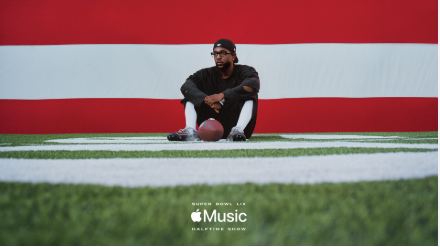
pgLang
KDOT
Kendrick Lamar’s Super Bowl halftime performance was more than just music—it was a statement. From the moment Samuel L. Jackson, portraying Uncle Sam, announced “This is the great American game,” at the start of the show, it was clear that Lamar had a deeper message to deliver.

Opening with an unreleased song, Lamar immediately set the tone for a performance filled with symbolism and purpose. Dancers dressed in red, white, and blue, representing the colors of the American flag, emerged from a 1987 Buick GNX. As the performance progressed, they formed the shape of the flag itself, visually reinforcing the message that Lamar was weaving throughout his set. At the conclusion of the first song, he declared, “The revolution ‘bout to be televised. You picked the right time but the wrong guy.” This powerful statement seemed to address the ongoing fight for Black empowerment, making it clear that his message would not be diluted. Throughout the show, different stages were shaped like PlayStation controller buttons, adding another layer of visual storytelling about the great American game.
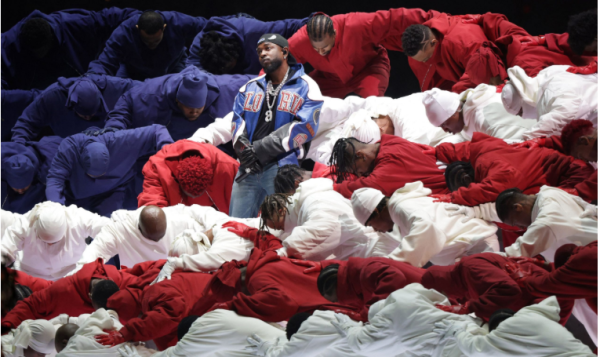
Lamar transitioned into “Reincarnated” from his latest collaborative album GNX before beginning “Squabble Up,” another track from the same album. However, before he could fully deliver, “Uncle Sam” interrupted saying, “No, no, no—too loud, too ghetto.” This moment symbolized the NFL’s alleged historical tendency to police Black artists and push them toward performances that feel more palatable to mainstream audiences. In response, Lamar shifted gears and performed “HUMBLE.” and “DNA.” from his album DAMN.—songs that, while still carrying deep meaning, have been widely accepted by the NFL’s audience.
Then, in a move that shocked the crowd, Lamar started performing his widely discussed diss track aimed at Drake during their rap feud “Euphoria.” As the opening notes played, a red warning light appeared in the crowd, flashing the words “WRONG WAY,” a symbol suggesting that America didn’t want him to perform this song. It was as if the message was telling him he was defying the norm, pushing boundaries, and rejecting the expectations placed on him.
He then delivered an a cappella performance of “Man at the Garden” from GNX, backed by men beatboxing. The staging of this moment was particularly significant, as the performers wore grills and baggy clothes, embodying a nostalgic representation of Black culture. One man was even seen lounging on a streetlight—a homage to the way young Black men in urban neighborhoods often gather and socialize.
Following this, Lamar performed “Peekaboo” from GNX, originally featuring Los Angeles rapper Azchike. While Azchike was not present, Lamar delivered both parts of the song seamlessly. He then approached a group of four Black women, teasing that he would play the audience’s “favorite song” but adding, “you know they love to sue.” This was a clever nod to Drake’s legal action against his and Lamar’s record label, Universal Music Group, for defamation. Instead of performing that track, he pivoted to “Luther” and “All the Stars” alongside r&b singer SZA, demonstrating their undeniable chemistry. This moment played into the audience’s love for mainstream, non-controversial hits, prompting Uncle Sam to declare, “That’s what America wants!”—a sarcastic jab at how the industry prefers digestible, non-disruptive content from Black artists.
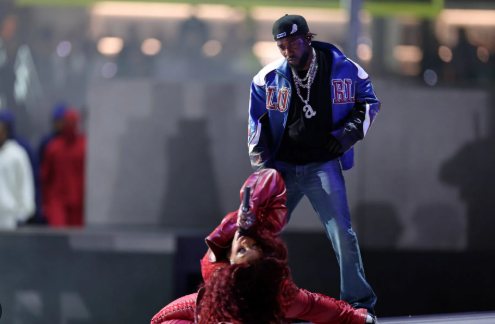
Just when it seemed like Lamar would end the show on a safe note, he made his final statement. Before launching into “Not Like Us,” the ultimate diss track against Drake, he declared, “Forty acres and a mule. This is bigger than the music.” The reference to the unfulfilled promise of reparations for Black Americans made it clear that Lamar was here to challenge the status quo. But Lamar wasn’t shifting the focus of his diss track entirely to America; he continued to insult Drake by having his alleged former girlfriend, tennis star Serena Williams, who is mentioned by name on the track and is also from Compton, California, make an appearance during this performance and dance on stage. Then, as he rapped the infamous line, “Say Drake, I hear you like ‘em young,” he smirked directly into the camera—an instantly iconic moment.
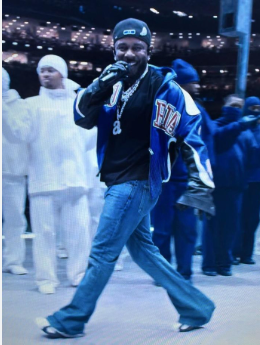
The performance concluded with “tv off” from GNX, and Lamar brought out producer Mustard for the final moments. As the music faded, stadium lights flickered with the words “GAME OVER,” signaling the end of a performance that was as politically charged as it was musically brilliant.
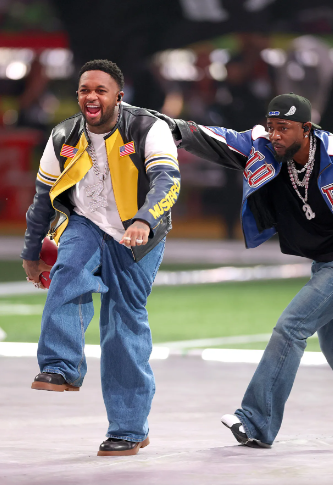
Beyond the spectacle, Lamar’s halftime show was a powerful representation of Black culture, West Coast hip-hop, and the ongoing struggle for artistic and social freedom. Every performer on stage was black, a fitting tribute to Black History Month. From the symbolism of the American flag to the streetlight homage, Lamar masterfully balanced artistry with activism, proving once again why he is one of the most compelling artists of this generation.